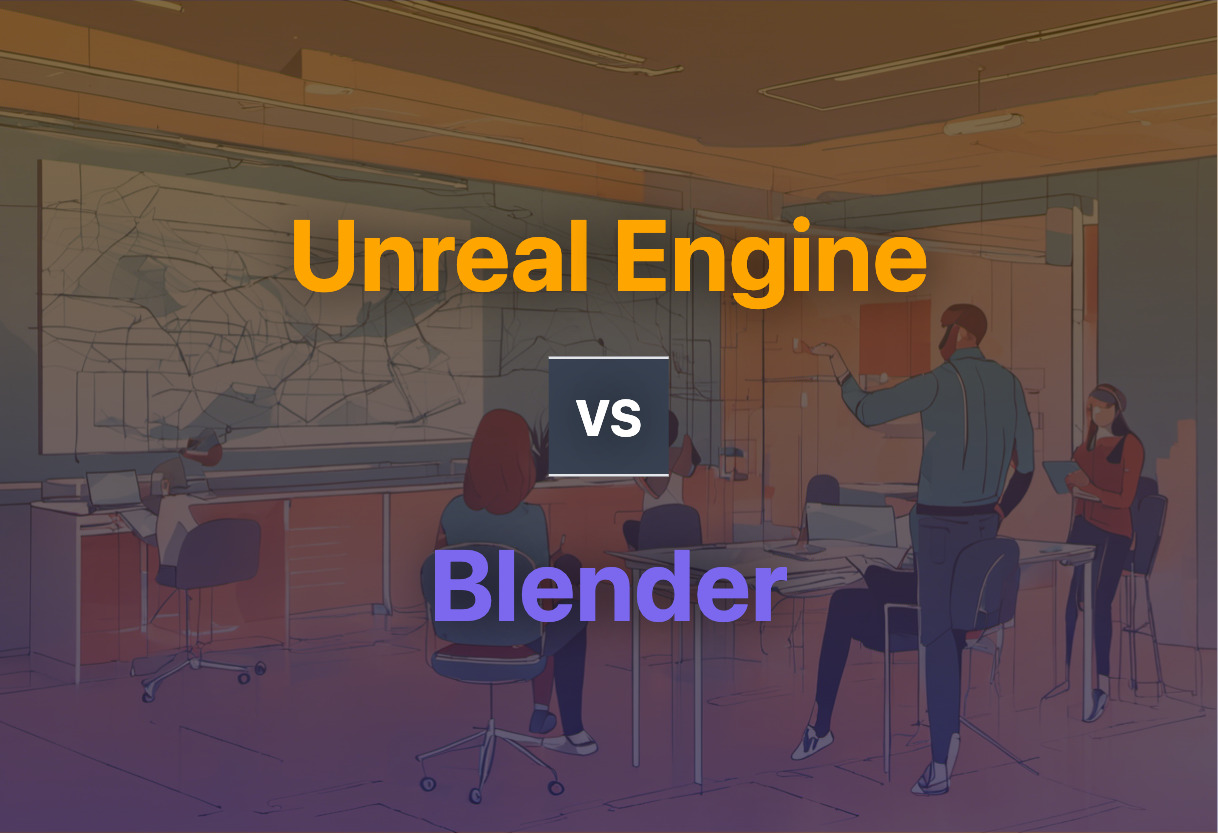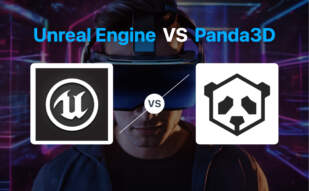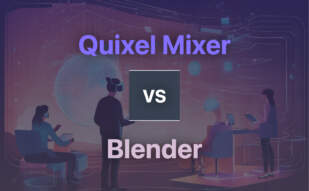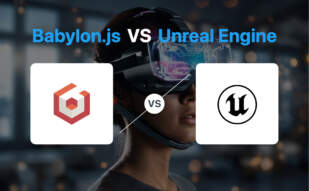Unreal Engine is the backbone for developers seeking high-end visuals, superior stability, and a wide range of platform support, making it optimal for complex AR/VR scenarios in gaming, film, and TV. Novices and those managing cost-efficient projects would lean more towards Blender due to its open-source, zero-cost nature, and diversity in animation and 3D modelling.

Key distinctions between Unreal Engine and Blender
- Platform Support: Unreal Engine brings expansive platform utility, including desktop, mobile, and VR whilst Blender’s primary focus is on computer-based applications.
- Cost: Epic charges a 5% revenue fee above USD 1 million for Unreal Engine; Blender is free, fostering cost-effectiveness.
- Functional Scope: Unreal Engine majors in game, film, and TV development, Blender targets animation, art, and interactive 3D applications.
- Community: Unreal Engine developers benefit from a bustling marketplace; Blender holds the edge with a more active open-source community.
| Comparison | Unreal Engine | Blender |
|---|---|---|
| Initial Release | 1998 | January 2, 1994 |
| Written in | C++ | C, C++, and Python |
| Use Cases | Primarily for developing games, also used in film and television | Used for animated films, visual effects, art, 3D-printed models, motion graphics, interactive 3D applications, virtual reality |
| Pricing Model | 5% of revenues over USD 1 million for commercial use. Free for education. | Free and open-source |
| Supported Platforms | Desktop, mobile, console, and virtual reality platforms | Linux, macOS, Windows, BSD, Haiku |
| Latest Release | Unreal Engine 5, April 2022 | LATEST_BLANK |
| Language for development within the tool | C++ | Primarily developed by community with C, C++, and Python |
What Is Unreal Engine and Who’s It For?
Unreal Engine (UE), the brainchild of Epic Games, is a series of 3D computer graphics game engines initially showcased in 1998. Originally designed to serve PC first-person shooters, its utility has expanded into various game genres and sectors such as film and television. UE backs multiple platforms from desktop to VR, making it a versatile asset for developers.
UE’s accessibility ranges from hobbyists to professional developers and even educational institutions thanks to its free version for schools and universities. With appealing basic project templates, it provides excellent kickstart points for a first or third-person gaming experience.

Pros of Unreal Engine
- Wide-ranging platform support
- Malleable for various genres and industries
- Features versatile level editor, UnrealEd
- Allows creation of iOS games and apps
- Charges minimum royalties for commercial use
Cons of Unreal Engine
- Demands knowledge of C++ for game development
- Large size can be challenging for limited storage devices
What Is Blender and Who’s It For?
Blender, an open-source powerhouse in the realm of 3D computer graphics software, surfaced through Dutch animation studio, NeoGeo in 1994. Famed for its extensive capabilities, it’s used in creating animated films, immersive virtual reality, and 3D printed models to name a few.
This dynamic tool is aimed at a wide audience, be it hobbyists, independent artists or professional studios. Its inclusive reach is further broadened by its availability across multiple OS platforms including Linux, macOS, and Windows.

Pros of Blender
- Rich feature set
- Free and open-source
- Multilingual support
- Aids a wide range of 3D file formats for import/export
Cons of Blender
- Complex interface for beginners
- No in-built game engine (deprecated since 2.8 release)
Unreal Engine vs Blender: Pricing
Unreal Engine operates on a royalty-based model for commercial usage, charging fees for revenue over USD 1 million, while Blender is a free and open-source toolset.
Unreal Engine
For commercial usage, Unreal Engine (UE) charges 5% of revenues generated beyond USD 1 million. This revenue-driven model, however, is waived for games published on the Epic Games Store. Moreover, while the engine is free for schools and universities, it imposes a fee of 5% on products generating over $3,000 per quarter. The revenue distribution on the Unreal Engine Marketplace heavily favours content creators, with an 88% share.
Blender
In stark contrast, Blender, a 3D computer graphics software toolset, stands as a free and open-source technology. It relies primarily on community development with the support of 26 full-time employees and 12 freelancers at the Blender Institute. The software, offering comprehensive 3D modelling features, incurs no usage charges or royalty fees for both individual users and commercial entities, embodying the ethos of accessible and democratized technology.
Unreal Engine or Blender: The Decisive Showdown
In the high-definition world of 3D computer graphics, two goliaths stand tall – Unreal Engine and Blender. But, in these virtual arenas, which titan reigns supreme?
The Game Makers
If you’re invested in creating a rich, immersive gaming universe, with brilliant graphics and resonating soundtracks, choose Unreal Engine. Its proficiency in C++, wide platform compatibility, and brilliant game templates make it a top-tier choice for game developers. Time to embrace Unreal’s firepower in the realms of gaming.

The Filmmakers
For those crafting cinematic masterpieces, Blender offers tantalizing utility. From sublime 3D modeling to its power-packed animation features, the software breathes life into every frame. And it’s available in 36 languages! Choose Blender; animate your virtual universes in high-definition.

The 3D Designers & Architects
When it comes to 3D modelling, texturing, or creating 3D-printed architectural models, Blender stands unrivalled. Its open-source nature and robust 3D toolset allow for unrestricted design freedom. If architecture and 3D design courses through your veins, it’s Blender calling your name.

In sum, if game development is your passion, pick Unreal Engine for its coding efficiency, wide platform scope, and extensive community. But if your designs, animations and VR explorations demand robust, versatile tools with no price tag attached, it’s Blender without a doubt.
Hannah Stewart
Content writer @ Aircada, tech enthusiast, metaverse explorer, and coffee addict. Weaving stories in digital realms.





